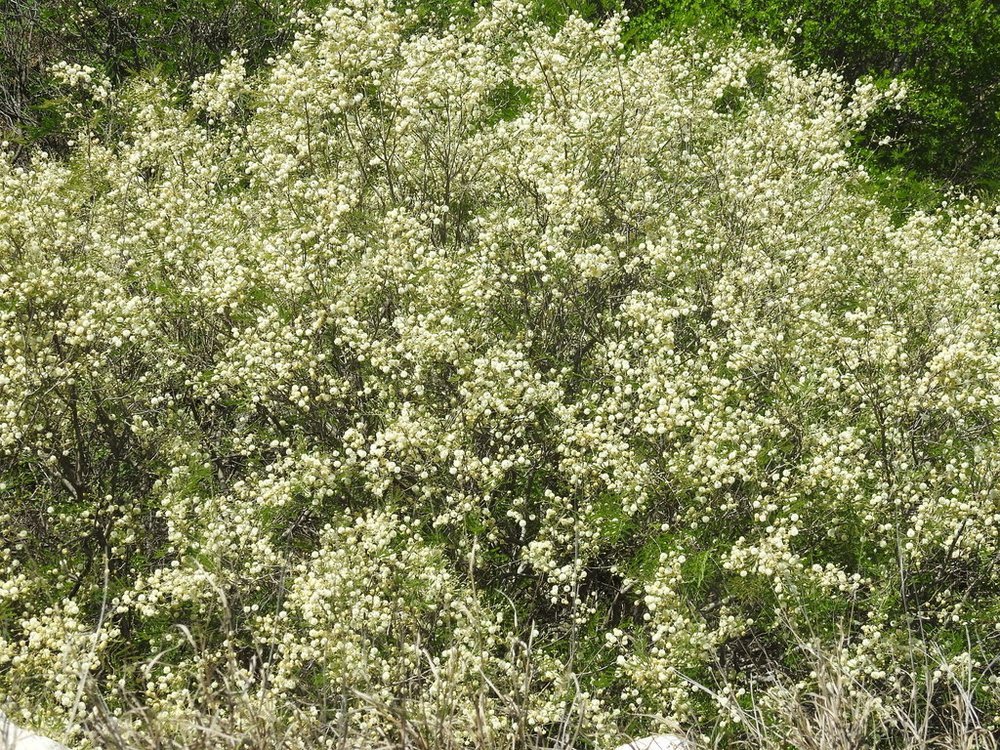Guajillo
Senegalia berlandieri
Family: Fabaceae
OTHER COMMON NAMES
Berlander acacia
CHARACTERISTICS
Small, mostly deciduous tree reaching to about 15’ tall and wide. Flowers are spherical and white, fragrant, and occurring from February through April and followed by woody legume seed pods that split open and spill seeds. This is a shrubby plant when young—avoid over-pruning to expose the trunk.
Often confused with feather tree (Lysiloma watsonii), which is slightly less cold hardy. You can tell the difference easiest when they are fruiting—Lysiloma has delicate, peeling pods while Senegalia berlandieri has thicker, more wooden pods that split open when ripe.
Photo by Charley on iNaturalist
Senegalia berlandieri on Lady Bird Johnson Wildflower Center
LANDSCAPE USE
Small shade tree or screening shrub
GROWING CONDITIONS
AN EXPLANATION OF TERMS USED
SUN full sun
WATER moderate to low,
SOIL loves well-drained soil, avoid dense clay soils
HARDINESS hardy to about 20°F
BASIN high zone
CONTAINER does moderately well in containers but will not attain full size
NUTRITION low
MAINTENANCE very little
ECOLOGY
Larval host for the long-tailed skipper (Urbanus proteus), and the Marine Blue (Leptotes marina). Nectar-rich flowers.
ETHNOBOTANY
The flowers produce a superior honey.
NATURAL DISTRIBUTION
Found in hillsides and slopes in the southern part of Edwards Plateau in Texas south through northeastern Mexico to Hidalgo.
TAXONOMY AND NAME
This species is in the Fabaceae, the legume family. There are 226 species in the genus Senegalia, worldwide.
Formerly known as Acacia berlandieri.
The genus “Senegalia” is a derivation of Senegal in Africa where many species in this genus originate. The berlandieri epithet comes from the name of Jean-Louis Berlandier, a French naturalist who studied wildlife native to Texas and Mexico.
Foliage detail, photo by Roberto Gaitan, iNaturalist
Puffball flowers appear February through April and are fragrant. Photo by Samantha Ferron, iNaturalist
The seedpods are woody and when ripe, split open to release the large seeds. Photo by biancajbanda, iNaturalist
This plant is in full bloom. Photo by sergioniebla, iNaturalist





